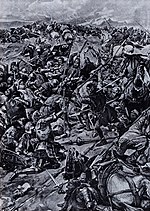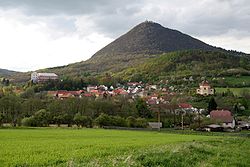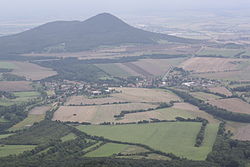Royal field with the monument to Přemysl the Ploughman
Buildings and structures completed in 1841Buildings and structures in the Ústí nad Labem RegionMonuments and memorials in the Czech RepublicNational cultural monuments of the Czech RepublicÚstí nad Labem District

Royal field with the monument to Přemysl the Ploughman (Czech: Královské pole s pomníkem Přemysla Oráče) is a Czech national cultural monument (declared as such in 1962). It is composed of the Royal field and the monument to Přemysl the Ploughman erected on the Royal field. It is located near the village Stadice, six kilometres southwest of Ústí nad Labem.
Excerpt from the Wikipedia article Royal field with the monument to Přemysl the Ploughman (License: CC BY-SA 3.0, Authors, Images).Royal field with the monument to Přemysl the Ploughman
258, okres Ústí nad Labem
Geographical coordinates (GPS) Address Nearby Places Show on map
Geographical coordinates (GPS)
| Latitude | Longitude |
|---|---|
| N 50.614166666667 ° | E 13.963055555556 ° |
Address
Pomník Přemysla Oráče
258
403 13 okres Ústí nad Labem
Czechia
Open on Google Maps











